Modular: The Traveller Central Supply Catalogue Page by Page: Survival Gear, Electronics and Computers…
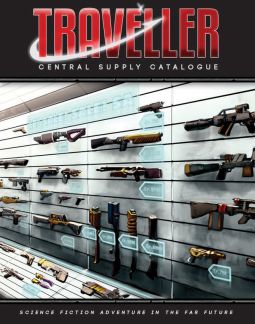
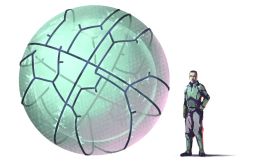
I’ve finally started making use of the Mongoose 2 Traveller Central Supply Catalogue. As predicted, it’s been handy to have two sets of armour listings, which is as far as I got last time with my page-by-page.
The players — all 13-14 year old boys — liked the catalogue just to look at. Rules aside, it added coolness to our Traveller sandbox game. One or two of the items proved invaluable, including the Diplomatic Vest, which the rogue character leapt on with unholy glee. (He should, however, have considered something more powerful than the flechette gun.)
So, now we’re onto Survival Gear, Electronics, and Computers, sections that continue the faux catalogue conceit.
2. Survival Gear
As with Armour, this section duplicates and expands on the equipment in the core rules. For example, it tells us more about “Artificial Gills” to make clear that these must be worn with a mask, and includes lots of new items.
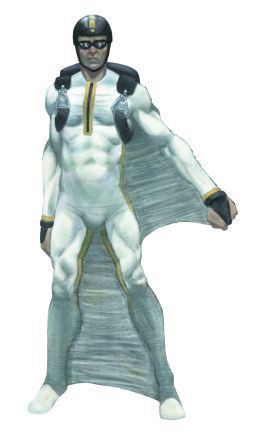
The kit is organized into sections according to environment: Aerial (as in flying), Atmospheric, Arctic and Cold, Desert and Arid, Mountains and Cliffs, Vacuum, General, and Wilderness Housing. This makes it very easy to equip Travellers for particular expeditions, with the index at the back if you need to look up particular items.
There is, of course, a risk of the choices being overwhelming. Where survival element is only incidental, the referee should probably just charge the characters a ballpark figure and mutter something about “you get some appropriate gear”. However, there are some cool items and some useful new rules.
In addition to classic adventure movie stuff like pitons and water dye, highlights include a Squirrel Suit as featured on crazy YouTube Videos (requires Athletics Dex, and perhaps “survival gear” is the wrong term); Hydro Reclamation Suit (think Dune); and the Rescue Ball.
There are also new or expanded rules for things that might otherwise be blanks in the Traveller universe: including Grav Parachutes, Infinite Ropes, Cold Weather Clothing (but not so detailed for Desert Gear), Fusion Stills and Advanced Bases.
The illustrations are for the most part informative and inspiring. However, they are all captioned using non-sequential faux catalogue numbers, e.g. “02/14003”, which is an annoying affectation, making it hard to go from image to item.
Next up, Electronics…
3. Electronics

Electronics covers Vision and Detection, Communications, and Gadgets and Essentials.
Breaking form, the Vision and Detection subsection does not entirely duplicate the listings in the core rules, nor does the text flag this up! It omits the Bioscanner, Densitometer, EM Probe, and NAS. It does, however, expand on the PRIS Binoculars, and has some nice options including Chemi-View Goggles and Psi-Finder Binoculars. It would have been nice had it cross-referenced the Scan Jammer (page 145) which does what the name implies.
Communications returns us to “duplicate and expand”. It succinctly presents the universe’s communications technology, repeating the Bug, Commdot, Mobile Comm and Transceiver, and adding the Holographic Projector (“Help me Obi Wan…“). Nothing really new here.
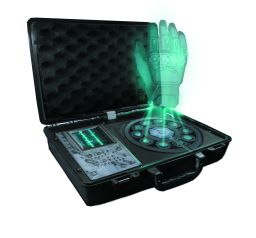
Oh and they muddle up the serial numbers and picture captions at least once. (Come on guys…!)
Gadgets and Essentials is really just two items, a gadget and an essential. We get a Ring Laser, familiar from Edmond Hamilton’s Star Wolf series (I wonder if that’s where they got it…), and a Wrist Watch. Enough said.
Overall, this section doesn’t add much to the setting or rules, but it’s nice to have it in one place so you can hand the catalogue to the players.
4. Computers and Software
This section restates the Rules, then covers Computer Systems, and Software Packages.
Rules… well, I don’t really like the Pythonesque way Traveller handles computers — it’s the 21st century and I just don’t think the things are sufficiently interesting to merit in-game calculations of processing power! Plus a lot of us have spent years trudging through similar stuff for a living. I’m tempted to house-rule away most of this! (I’ll let you know what I come up with.)
Computer Systems duplicates the material from the core rules, and adds “Mainframe” for those of us who want to feel old.
Software Packages overlaps and unpacks items from the core rules, with the addition of Digital Friend (“Paging Sirius Cybernetics…!“) It’s handy to have this in alphabetical order and slightly fleshed out.
Thoughts so far…
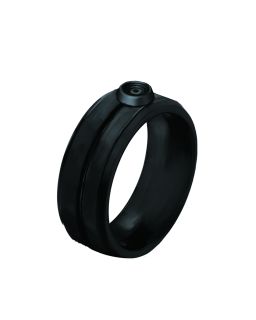
These three sections aren’t really related. Survival Gear adds texture and has the potential to enhance play. The others are “nice to have” only, and don’t add more than you could make up on the fly. The index is functional but the faux catalogue conceit is more irritating the more I use the book, especially the numbering of the illustrations.
It’s nice to see the way the tropes from classic SF slip into the Travellerverse. I picked up echoes of Herbert, Adams and Hamilton. I’m sure there’s more in there! Though there’s nothing preventing a referee just adding kit, it’s nice to have somebody else do the work drawing up specifications and prices, and to have the items appear in the catalogue, looking all official and sparkly.
Overall, now I’ve started routinely refereeing Traveller, I’m glad I have this book. It’s handy to have a separate volume when the players want to go shopping, one or two bits of kit are already adding texture to the game, and I know I shall draw on the additional arctic survival rules when I dump them on a certain world called “Sadsack”… 😉
M Harold Page is the Scottish author of The Wreck of the Marissa (Book 1 of the Eternal Dome of the Unknowable Series), an old-school space adventure yarn about a retired mercenary-turned-archaeologist dealing with “local difficulties” as he pursues his quest across the galaxy. His other titles include Swords vs Tanks (Charles Stross: “Holy ****!”) and Storyteller Tools: Outline from vision to finished novel without losing the magic. (Ken MacLeod: “…very useful in getting from ideas etc to plot and story.” Hannu Rajaniemi: “…find myself to coming back to [this] book in the early stages.”)